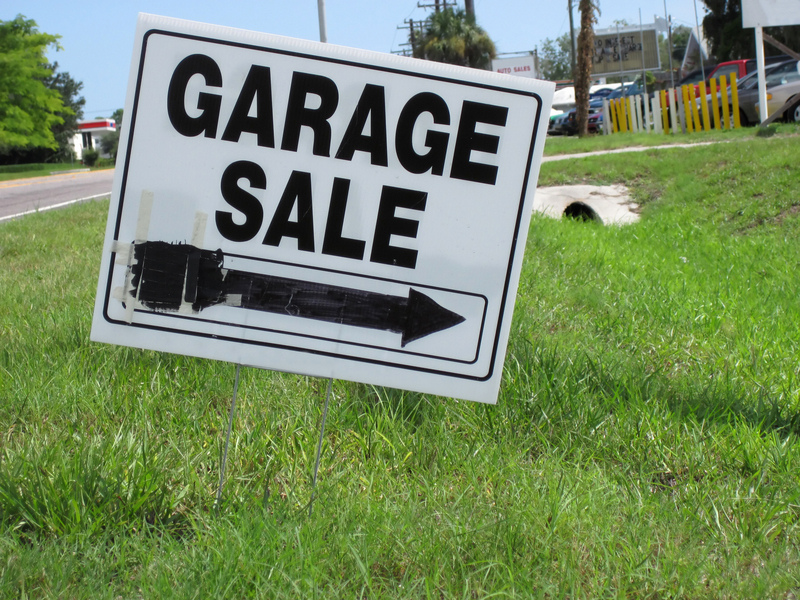Builders Skips Explained: Their Essential Role
Builders skips have long been synonymous with construction sites, home renovations, and commercial development projects throughout the UK. If you have ever wondered why these large, sturdy containers are so prevalent, this comprehensive guide will explore their essential function, types, benefits, and how to effectively use them. The importance of builders skips in waste management cannot be understated. Read on to discover why builders skips are indispensable for professionals and homeowners alike!

What Are Builders Skips?
In essence, a builder's skip is a robust container designed to hold and transport large volumes of waste generated during construction, demolition, home improvement, or landscaping projects. These skips are available in various sizes but typically refer to the 6-yard or 8-yard capacities, which are best-suited for heavy and bulky materials.
Builders skips are made of heavy-duty steel, ensuring durability and safety when handling materials such as bricks, concrete, soil, and other building debris. They are delivered to your location by skip hire companies, filled at your convenience, and then collected for responsible disposal or recycling.
The Evolution of the Builder Skip
Originating in the early 20th century, skips revolutionised the way waste was managed on job sites. Gone were the days of multiple trips in wheelbarrows or using shallow containers that couldn't handle the sheer volume. Today, builders skips are integral to maintaining order, efficiency, and eco-friendly practices on construction projects of all sizes.
Why Builders Skips Are Essential on Site
Understanding the vital role of builders skips starts with appreciating the challenges of waste disposal in the construction industry. Here's why skips are more than just containers--they're vital tools for modern building practices:
- Waste Volume Management: Construction activities produce tons of waste, from packaging and old fixtures to bricks and plaster. Builders skips centralise waste, preventing clutter and potential hazards on site.
- Health and Safety Compliance: UK regulations demand tidy, hazard-free construction areas. Skips help keep walkways and work zones clear, reducing accident potential.
- Efficient Workflow: Workers save time by disposing of waste directly into a skip rather than making frequent trips to distant bins.
- Sustainable Waste Handling: Most skip hire services sort and recycle collected waste, supporting sustainability goals and legal requirements for landfill diversion.
- Cost Effectiveness: By consolidating waste disposal and minimising manual labour, skips help keep project budgets in check.
Without builders skips, construction and renovation projects would be chaotic, less productive, and far more harmful to both workers and the environment.
Choosing the Right Builders Skip Size
Selecting the correct size skip for your project is essential for maximising efficiency and controlling costs. Here's a quick overview of common builders skip sizes and their typical applications:
- 6-Yard Builder's Skip: Known as the "small builders skip", this size holds approximately 55-60 bin bags of waste and is ideal for mid-sized domestic renovations or landscaping projects.
- 8-Yard Builder's Skip: The classic "builders skip" and the most popular choice for construction companies, it accommodates almost all general building waste and is perfect for larger renovations or small commercial sites. It holds around 70-80 bin bags of waste.
- 10-Yard and Larger Skips: Suitable for substantial commercial projects or extensive house clearances, but may not always be appropriate for very heavy materials due to weight restrictions.
It's important to remember that overloading a skip is illegal and unsafe, so always consult with your skip hire provider to choose the most suitable option for your needs.
What Can Go in a Builders Skip?
Builders skips are intended for non-hazardous, inert construction waste. Acceptable items typically include:
- Bricks, concrete, and rubble
- Soil and hardcore
- Wood, timber, and plasterboard
- Metal waste
- Unwanted fixtures and fittings
- Packaging (cardboard, plastic)
Prohibited Items: What Not to Put in Your Builders Skip
For safety and environmental reasons, certain materials are strictly forbidden in builders skips. These include:
- Asbestos
- Electrical items and appliances
- Chemicals, solvents, or paint
- Batteries and tyres
- Gas cylinders or hazardous waste
- Liquids of any kind
Incorrect waste disposal can result in heavy fines. If you need to remove these materials, always consult your skip hire company for specialist options.
The Environmental Impact of Builders Skips
Builders skips play a crucial role in minimising the environmental footprint of construction projects. Here's how hiring a builders skip supports sustainability:
- Encouraging Recycling: Skip companies separate and recycle materials, diverting waste from landfills.
- Reducing Illegal Dumping: Having accessible, on-site skips reduces temptation for fly-tipping or unauthorised disposal of building debris.
- Promoting Site Tidiness: Proper waste containment limits dust, chemicals, and detritus from polluting soil and water sources.
- Lowering Carbon Footprint: By consolidating waste removal into fewer trips, builders skips cut fuel use and emissions associated with waste transport.
More and more UK builders are selecting skip suppliers committed to zero-to-landfill policies and stringent recycling standards.
The Economic Value of Builders Skip Hire
Effective waste management translates to significant cost savings for anyone involved in building or renovation:
- Reduced Labour Costs: Fewer hours spent handling rubbish means more resources for core construction tasks.
- Avoidance of Penalties: Fines related to improper waste disposal are easily avoided with a reputable skip hire service.
- Predictable Budgeting: Fixed skip hire costs simplify expense planning and reduce risk of unexpected fees.
Besides direct savings, companies benefit indirectly from improved project timelines, enhanced client satisfaction, and a cleaner company reputation.
How to Maximise Your Builders Skip Usage
To get the most from your builders skip--whether you're a site manager, homeowner, or business owner--follow these expert tips:
- Plan Placement Carefully: Place the skip close to the work area but out of pathways to maximise safety and convenience. If the skip must be placed on a public road, you'll need a council permit.
- Break Down Materials: Dismantle large items or crush waste as much as possible to leave fewer air gaps and fit more in your skip.
- Load Efficiently: Start with flat or heavy items, and stack lighter, bulkier waste on top.
- Don't Overload: Never fill the skip above the rim. Overloaded skips may be refused collection due to safety concerns.
- Keep Restricted Items Out: As noted earlier, keep hazardous or prohibited items out, or ask your provider for alternatives.
How Long Can You Keep a Builders Skip On Site?
Most skip companies offer flexible hire periods, ranging from a few days to several weeks. Always confirm your project timeline in advance and arrange for pick-up as soon as your job wraps up to avoid additional charges or permit complications.
The Builders Skip Hiring Process From Start to Finish
Hiring a builders skip is a straightforward process if you follow these basic steps:
- Assess Your Waste: Estimate the type and amount of waste your project will generate. This guides your skip size selection.
- Obtain Necessary Permits: If your skip will be placed on public land, such as a footpath or road, your skip provider can usually arrange a permit on your behalf.
- Order Your Skip: Find a reputable, licensed local skip hire company. Arrange the delivery date and tell them about site access issues such as narrow entries or soft ground.
- Fill the Skip Responsibly: Follow guidelines for loading, prohibited items, and maximum fill line.
- Collection and Recycling: Once full or at the end of the hire period, call your provider for pick-up. The waste is transported, sorted, and recycled wherever possible.
Builders Skips vs. Other Waste Disposal Options
Why choose a builders skip over alternatives like skip bags, grab hire, or making trips to the tip yourself? Here's a quick comparison:
- Convenience: Skips remain on site for as long as you need them, making disposal continuous and hassle-free compared to single-use grab lorries or skip bags.
- Capacity: Builders skips are capable of handling substantial volumes and weights--not often possible with bags or bins.
- Health & Safety: Skips aid in keeping sites compliant with Construction (Design and Management) Regulations 2015 by containing debris and reducing trip hazards.
- Cost: For projects generating a lot of waste, a skip is usually more economical than repeat tip runs or the cumulative cost of multiple skip bags.
For most building projects, skips are the gold standard in waste management--affordable, safe, and environmentally responsible.
When Are Alternative Solutions Better?
If your job involves only a small quantity of lightweight waste, a skip bag may be sufficient. Grab hire is sometimes preferred for projects with limited space or for swift removal of loose materials, but for versatility, builders skips remain second to none.

Frequently Asked Questions About Builders Skips
1. What's the difference between a builders skip and a regular skip?
"Builders skip" is a commonly used term for 6- to 8-yard skips, optimised for construction and renovation waste. They are stronger and intended for heavier debris than most mini skips or domestic bins.
2. Can I place a builders skip anywhere?
Builders skips can be placed on private land without restriction, but permitting is required for placement on public roads or pathways.
3. How much does it cost to hire a builders skip?
Prices vary by location, size, and duration, but you can generally expect to pay between ?150 and ?250 for a standard 6- or 8-yard builders skip for a week's hire.
4. How is the waste from builders skips processed?
After collection, waste is taken to licensed facilities. Here it's mechanically sorted; recyclable material like metals, wood, and stone are separated while the remainder is carefully managed to limit landfill use.
5. Are there weight limits with builders skips?
Yes. Exceeding safe weight limits can make skips dangerous to transport. For 6-yard skips, the maximum weight is usually around 6 tonnes, and for 8-yard skips, it's up to 8 tonnes. Consult your hire provider for details.
Conclusion: The Undeniable Importance of Builders Skips
Builders skips have become an essential component of efficient, safe, and eco-conscious building practices. Their robust design, large capacity, and ability to centralise waste make them invaluable for both small- and large-scale construction projects. By facilitating organised site management, legal compliance, and responsible recycling, builders skips underpin the entire framework of modern construction waste management.
If you're planning renovations, a home extension, or managing a commercial development, investing in builders skip hire will save you time, money, and stress--while safeguarding your reputation and the environment.
Choose a local, licensed provider and experience the difference that an expertly managed builders skip can make for your project's success!